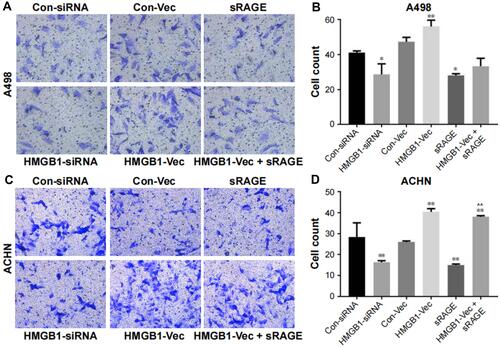Wu CZ, Zheng JJ, Bai YH, Xia P, Zhang HC, Guo Y. Onco Targets Ther. 2018;11:4501–4510.
Following a review of the data post-publication, the authors found the incorrect images were used for and . The correct images for and are shown in this corrigendum. All the correct images were collected from the second independent experimental group which formed part of the original data. The image backgrounds of this group appear different from the first independent experimental group, shown in the original article, due to the different microscopes used to collect the images (Nikon Ti-s and LEICA DMi1, respectively).
On page 4506, and should be presented as follows:
Figure 3 HMGB1 knockdown suppressed the invasion of RCC cells.

The authors wish to explain that the analysis of all three data sets was performed prior to the photographs being taken, thus this correction has no impact on the findings of the study.
The authors apologize for this error and any confusion caused.
